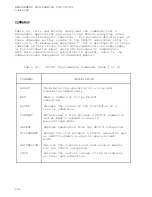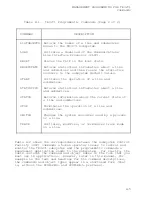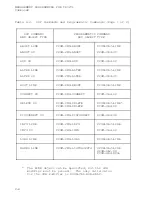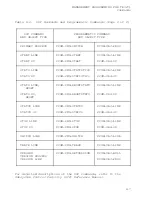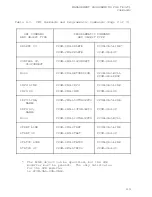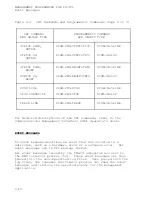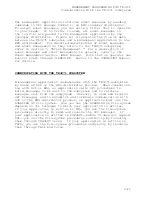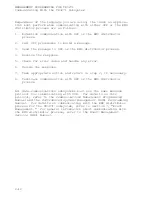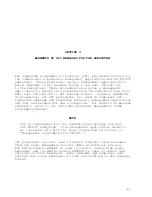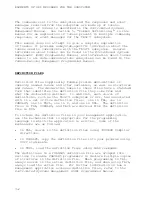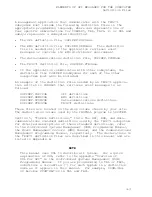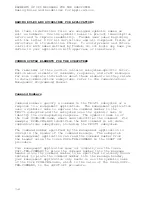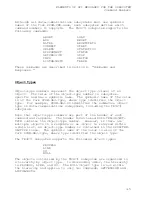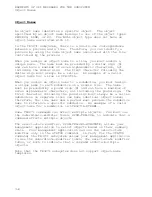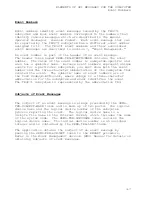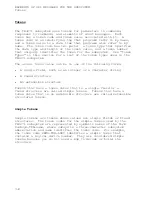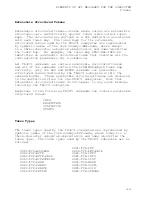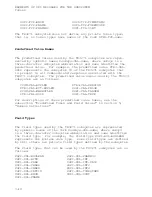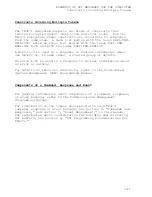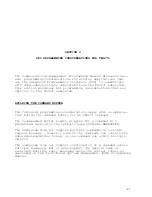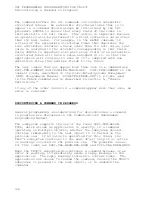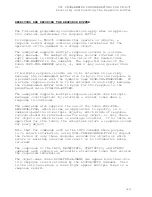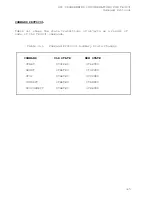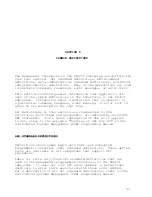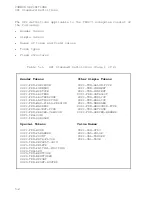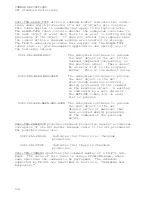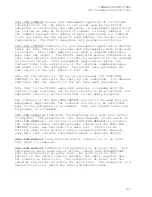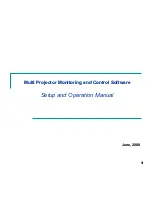
ELEMENTS OF SPI MESSAGES FOR THE SUBSYSTEM
Object Names
Object Names
An object name identifies a specific object. The object
specified by an object name belongs to one of the object types
PROCESS, LINE, or SU. The NULL object type does not have an
object name associated with it.
In the TR3271 subsystem, there is a one-to-one correspondence
between a process and a line. Therefore, you can identify a
process by using the same object name associated with the line
controlled by the process.
When you assign an object name to a line, you must assign a
unique name. The name must be preceded by a dollar sign ($)
and can have a maximum of seven alphanumeric characters, not
including the dollar sign. The first character following the
dollar sign must always be a letter. An example of a valid
object name for a line is $TR3271A.
When you assign an object name to a subdevice, you must assign
a unique name to each subdevice on a single line. The name
must be preceded by a pound sign (#) and can have a maximum of
seven alphanumeric characters, not including the pound sign. The
first character following the pound sign must always be a letter.
Subdevices on separate lines can have identical object names;
therefore, the line name and a period must precede the subdevice
name to reference a specific subdevice. An example of a valid
object name for a subdevice is $TR3271A.#TERM1.
Some TR3271 commands can affect multiple objects. You must use
the subordinate-modifier token, ZCOM-TKN-SUB, to indicate that a
command affects multiple objects.
The select-state modifier, ZCOM-TKN-SEL-SUMSTATE, allows your
management application to select objects based on their summary
state. Your management application can use the select-state
modifier only in the STATUS command. In fact, for the STATUS
command, the TR3271 subsystem allows your management application
to use the subordinate-modifier token, the select-state modifier
token, or both to indicate that a command affects multiple
objects.
Note that the TR3271 subsystem does not support object-name
templates.
3-6

